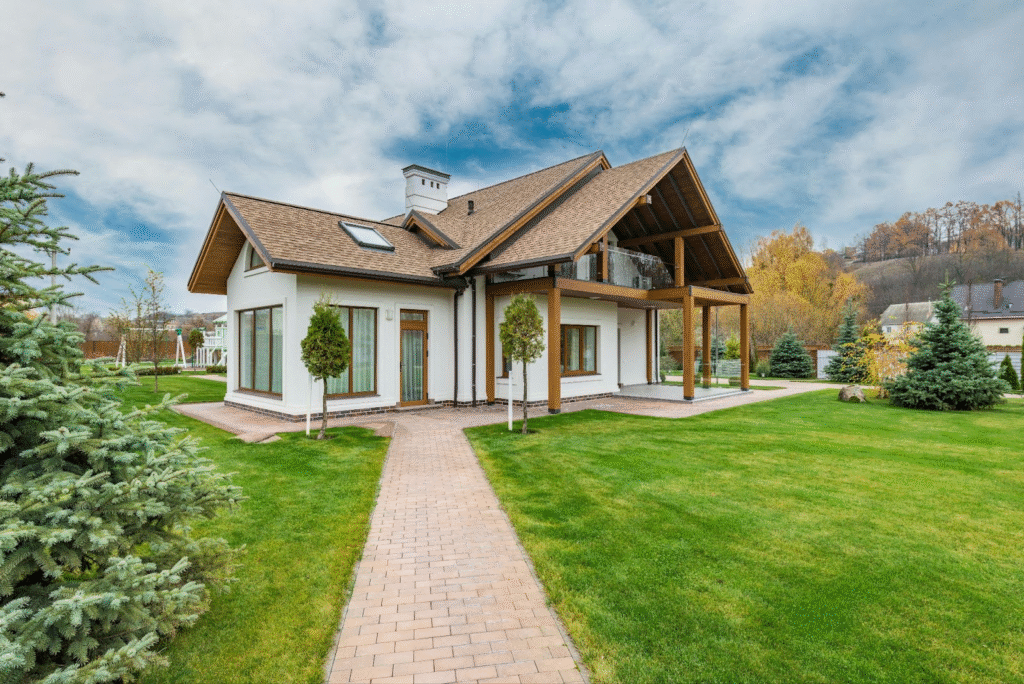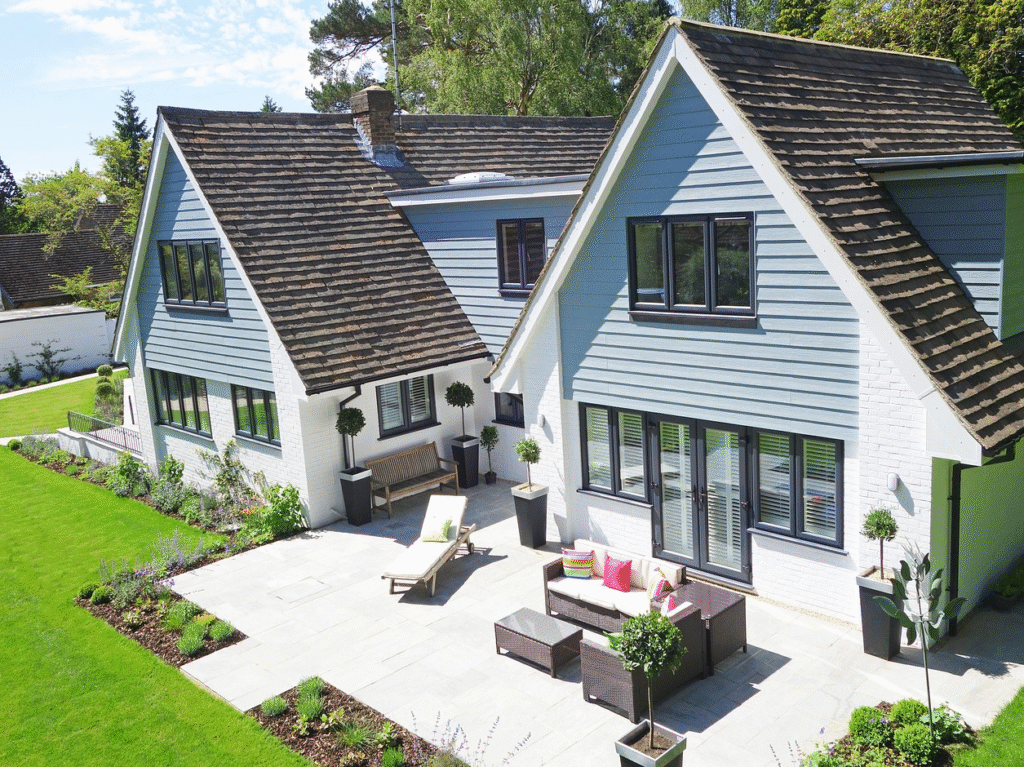How Smart Lighting Can Save You Money and Energy in the modern age, where environmental concerns and rising energy costs dominate conversations, making efficient choices in home technology is more important than ever. One of the easiest and most effective ways to reduce your energy consumption and save money is by upgrading to smart lighting for energy efficiency. Beyond merely turning lights on and off, smart lighting systems offer a plethora of features that allow homeowners to reduce waste, optimize energy use, and lower their electricity bills. This article explores how embracing smart lighting can have a significant impact on your energy efficiency and finances.

What is Smart Lighting?
At its core, smart lighting is an advanced lighting system that allows users to control their lights remotely through smartphones, voice commands, or automated settings. It’s far more sophisticated than traditional lighting, offering features like adjustable brightness, customizable colors, motion detection, and the ability to schedule lighting times.
With the rise of the smart home revolution, smart lighting for energy efficiency has become one of the most popular and impactful ways to improve energy management within a household. The integration of smart lighting into a smart home ecosystem can offer long-term energy savings, reduced environmental impact, and increased convenience.
The Financial Benefits of Smart Lighting
1. Reduced Energy Bills
The primary way smart lighting for energy efficiency saves money is by significantly reducing your electricity usage. Traditional lighting systems are wasteful in nature, often leaving lights on when not needed, especially in unoccupied rooms or spaces. With smart lighting, you have full control over your lighting system, ensuring that lights are only on when necessary.
For instance, smart lighting systems equipped with sensors can detect when a room is unoccupied and automatically turn off the lights. You no longer have to worry about wasting electricity in a room that no one is using. Moreover, these systems often allow for dimming, so you can adjust the brightness based on the time of day or specific needs. A lower brightness requires less energy, which directly reduces your power consumption.
2. Extended Lifespan of Light Bulbs
Another financial advantage of smart lighting for energy efficiency comes from the extended lifespan of your light bulbs. Traditional incandescent bulbs burn out relatively quickly, leading to frequent replacements. On the other hand, many smart lighting systems use energy-efficient LED bulbs, which last significantly longer and consume less power.
LED bulbs can last up to 25 times longer than incandescent bulbs, reducing the frequency of replacements and minimizing the amount spent on new bulbs. This longevity also contributes to a reduction in the environmental impact, as fewer light bulbs end up in landfills.
3. Reduced Carbon Footprint
Beyond the financial savings, the environmental impact of using smart lighting for energy efficiency is significant. By using less energy, you not only save money but also contribute to a reduction in your carbon footprint. The more you can reduce your energy consumption, the fewer resources are needed to power your home, and this translates into lower emissions from power plants.
This can be particularly impactful if you live in an area that relies on fossil fuels for energy production. By reducing the amount of electricity you use, you are directly helping to reduce greenhouse gas emissions, making your home more eco-friendly and sustainable.
How Smart Lighting Works to Save Energy
1. Automation and Scheduling
One of the most important features of smart lighting for energy efficiency is automation. These systems can be programmed to operate based on your daily routines, turning lights on or off at designated times. For instance, you can set the lights to automatically turn off when everyone leaves the house, or schedule them to brighten gradually in the morning to simulate natural sunlight, reducing reliance on harsh lighting.
By automating your lighting based on your behavior, you ensure that lights are never left on unnecessarily, which can be a significant waste of electricity. Scheduling your lights to follow your pattern of activity makes it easier to avoid the common problem of forgetting to turn off lights.
2. Motion Sensors for Efficiency
Motion sensors are another key feature in smart lighting for energy efficiency. These sensors automatically detect movement in a room, triggering the lights to turn on when someone enters. Once the room is empty, the lights turn off automatically, saving energy when no one is present.
In areas such as hallways, bathrooms, and garages, where lights are often left on by mistake, motion sensors are an ideal solution. They ensure that your lights are only on when needed, eliminating wasted energy and reducing electricity costs.
3. Dimming Capabilities
Another excellent way smart lighting for energy efficiency works is through dimming. Unlike traditional light switches, which either turn lights on or off with a set brightness level, smart lighting systems allow you to adjust the brightness based on your needs. Dim lights use less energy than bright lights, so reducing the intensity in areas where you don’t need full illumination, such as during the evening or when watching TV, can significantly lower power consumption.
For example, a living room light that’s dimmed to 50% uses half the energy of a light running at full capacity. Additionally, by utilizing dimming features, you can create the perfect ambiance while still maintaining energy efficiency.
4. Color Temperature Adjustment
Some smart lighting systems also offer the ability to adjust the color temperature of the bulbs. While it might seem like a luxury feature, this can be an efficient way to reduce energy consumption as well. Cooler, bluish lights, often used in the daytime, can promote alertness and reduce the need for additional artificial lighting. Warmer, yellow-toned lights, often used in the evening, create a relaxing environment and are typically dimmed to save energy.
Adjusting the color temperature to suit the time of day or activity at hand can make the lighting system more efficient, ensuring that it meets both your aesthetic preferences and your energy-saving goals.
5. Smart Integration with Other Systems
The integration of smart lighting with other smart home systems can significantly improve overall energy efficiency. When combined with smart thermostats, for example, lights can be programmed to automatically adjust in response to changes in temperature. If a room becomes too hot or too cold, your thermostat may adjust, and in turn, your lighting system can adjust to match the energy usage.
Additionally, integrating your smart lighting for energy efficiency system with voice assistants, like Amazon Alexa or Google Assistant, allows you to easily control your lighting without needing to physically interact with the system. This level of automation can prevent energy waste by enabling quick adjustments when needed.
Practical Tips for Maximizing Energy Savings with Smart Lighting
While smart lighting systems are inherently more efficient than traditional lighting, there are a few strategies that can help you get the most out of your system:
1. Take Advantage of Scheduling
By setting up a robust schedule for your lights, you can ensure that your lights are only on when necessary. For example, program your outdoor lights to turn on at dusk and off at midnight, or have your bedroom lights automatically dim at a certain time in the evening. The more you can align your lighting with your natural habits, the more you will reduce energy waste.
2. Use Smart Sensors in High-Traffic Areas
For rooms that are frequently used, such as the kitchen, living room, and bathrooms, make use of motion sensors. These sensors will turn the lights on when someone enters and automatically turn them off when the room is vacant. In addition to saving energy, this also adds a layer of convenience as you no longer need to fumble for light switches in the dark.
3. Use Dimmer Features Regularly
Be mindful of how bright you set your lights. In areas like living rooms or bedrooms, where full brightness may not always be necessary, consider dimming the lights to reduce energy consumption. Most smart lighting systems come with simple controls that allow you to adjust brightness quickly and easily.
4. Group Lights Together
In larger homes, consider grouping lights together based on the rooms or areas they are in. By controlling a group of lights at once, you ensure they all turn off simultaneously when not needed. You can also create “scenes,” which are presets that adjust the lighting in a room for various activities, such as movie nights, reading, or dining, without having to adjust each light individually.
5. Integrate with Solar Power
For those interested in taking their energy efficiency even further, integrating your smart lighting system with solar power is a powerful option. Many smart lights can be powered by solar energy, further reducing your reliance on grid electricity and saving even more money in the long term.
By adopting smart lighting for energy efficiency, you can significantly reduce your electricity consumption, lower your energy bills, and even enhance the overall atmosphere of your home. The ability to automate lighting, use motion sensors, adjust brightness levels, and integrate with other smart home systems means that your lighting is working for you—not against you. As technology continues to evolve, the possibilities for energy savings with smart lighting will only expand, offering even more opportunities to live more sustainably and save more money. Embracing smart lighting isn’t just a modern convenience; it’s a smart, energy-efficient choice that benefits both your home and the planet.






